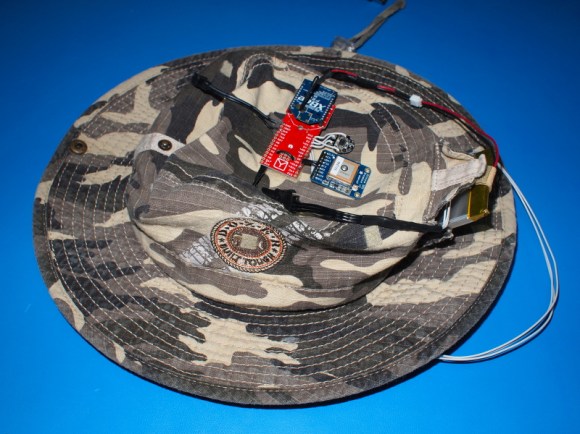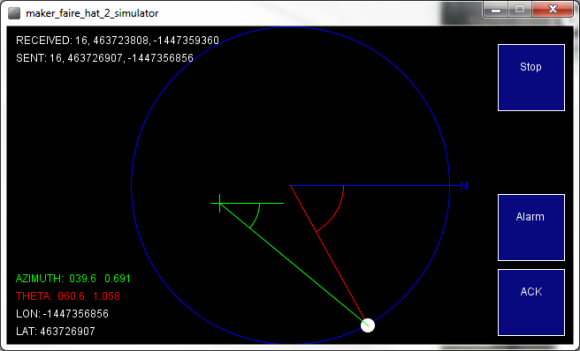
[John Petersen] created a very cool piece of wearable technology for him and his son. Eager to explore the Maker Fair, but not eager to lose his son in the crowds, he’s come up with the Seeker Hat — a kind of auto-locating GPS hat which always points towards the other.
It’s a clever setup that makes use of a GPS module, a microprocessor, a xBee wireless chip, a compass, and LEDs to light the way. The GPS determines the hat’s approximate location, the xBee transmits it to the other hat, the digital compasses determine the directions of both hats, and the microprocessor figures out the azimuth, resulting in a difference in trajectory of the two — a strip of LEDs, like landing lights, direct you in the right direction.

In the future, [John] wants to create a mesh network so more than two hats can participate, and maybe even make a handheld “locator” device as well, instead of a hat — but the biggest problem he faced was that his son would turn off his hat. Kids.














Here’s a quick way to calculate azimuth using a small microcontroller:
http://robots-everywhere.com/portfolio/math/fastatan2_integer.htm
Current code uses a simple atan2() library call, which is a fine solution, even on many 8 bit microcontrollers. If the atan2() is too big and slow, then I would make a table, with a precalculated y/x value per LED, and iterate through the table to find the closest one. Since there’s only 5 LEDs on the hat, that should be simple.
So what kind of range were you able to get? This could be useful in other places like amusement parks or shopping malls (or even finding my keys in the house :) ).
Move over, Tinder. Just sayin…
next version needs to be scaled down until it fits in a radioisotope powered subcutaneous implant then? ;)
No, no, no. What he needs to do next is replace the LEDs with a voice synthesis module and have it say “Cold, warm, warmer, your red hot”, etc…
do you get reliable gps coordinates indoor ?
What is needed is to design a system that is a self contained “LORAN” that uses two beacons you can set up and use that for relative position calculations.
Why? Because a LOT of big events like makerfaire are held inside under steel roof arenas and GPS does not work there. Tried the GPS trick at CES with a friend by using the garmin FRS radios that send GPS data to each other. Inside CES you get zero GPS signal.
I had an idea similar to this last summer. My idea was to plant nodes in my yard and use a system like this to plot out paths to mow my lawn and then the LEDs on the hat would cue me when to turn. I don’t think GPS is accurate enough, though.